Sun-Ling made a new friend in Huize. While checking out the old Confucius Temple and Academy, now the Huize No. 1 Middle School, we happened to walk into a student cafeteria just at closing and were invited to eat dinner with the staff who were eating their meal. No hesitation on my part. Good eats! Two days later, we ran into one of the ladies as we were taking our evening constitutional up to the Taoist Temple at the southern end of town. She and Sun-Ling became quite good friends as we strolled up and down together, chatting about life.
Nearby Huize is Baiwu Ancient Village, where copper has been mined for 2000 years. Baiwu is also located on a beautiful green plain surrounded by mountains. We rode city bus #17 from Huize to the end-of-the-line, then walked 6 kms to Baiwu. There are quite a few old crumbling family compounds in Baiwu, an old watchtower, wells, and a meandering stream. Having renovated/restored some old buildings, the town wants to attract tourists but the flies, smells, filth will make that a difficult task.
Observatory - Confucius Temple - Huize.
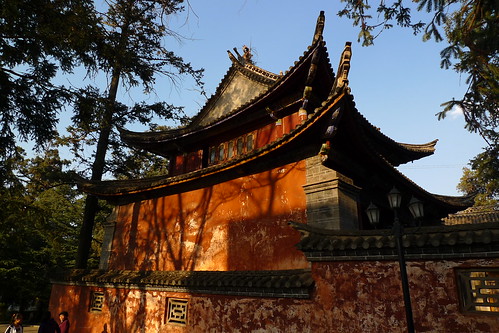
A couple views of the stage at the Jiangxi Guild Hall.


Making egg noodles.

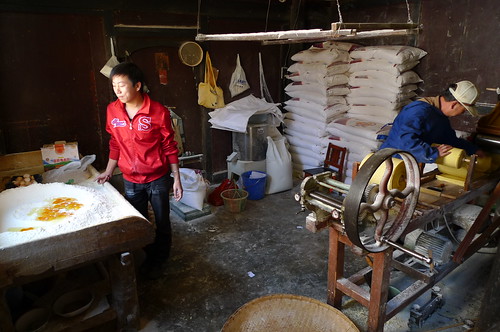
Typical street scene in the old part of Huize.

Some of the copper mined in Baiwu was minted into coins in Huize; thus the coin is the city symbol; hence the Giant Coin in the main square.
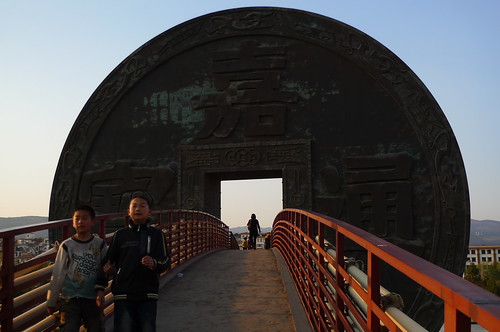
Heading to the well at sunset - Huize.
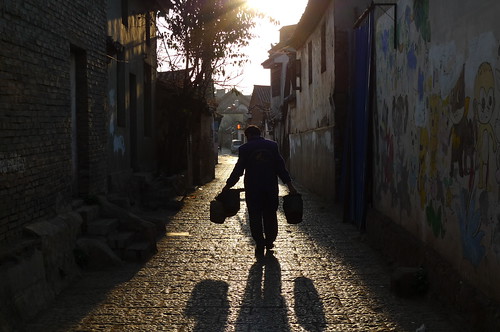
Huize with the old town in the middle - more or less.

View of Baiwu Village.

Watchtower.

Washing clothes at the well - Baiwu Village.
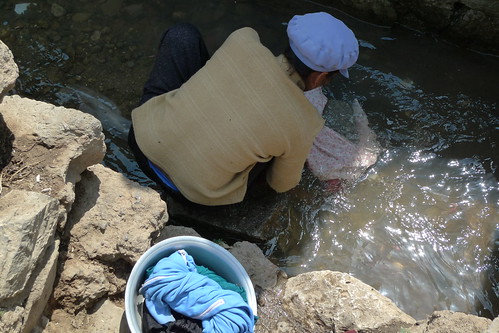
Working the fields.

Old family compound.

Composting in the streets.

Restored Catholic Church - Baiwu Village.

Restored Taoist Temple.
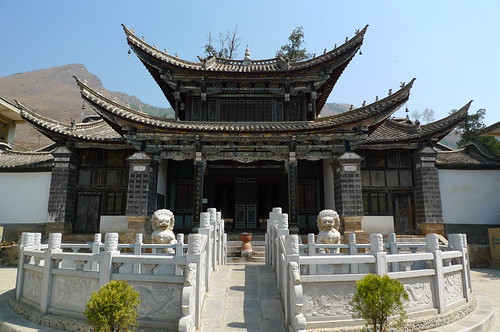


2 comments:
Have you learned any architectural reason for the pointy uplifting roof peaks? Other than decorative, that is, which it certainly is.
Ed, No architectural reason that I know of, but I did some checking online and came up with this additional bit of info that makes sense to me: Traditionally, Chinese residences are courtyard houses. That puts half of the roof on the "interior" of the house, thus the motive to "decorate". Chinese are also big on symmetry, so all sides of the roof are decorated.
Post a Comment